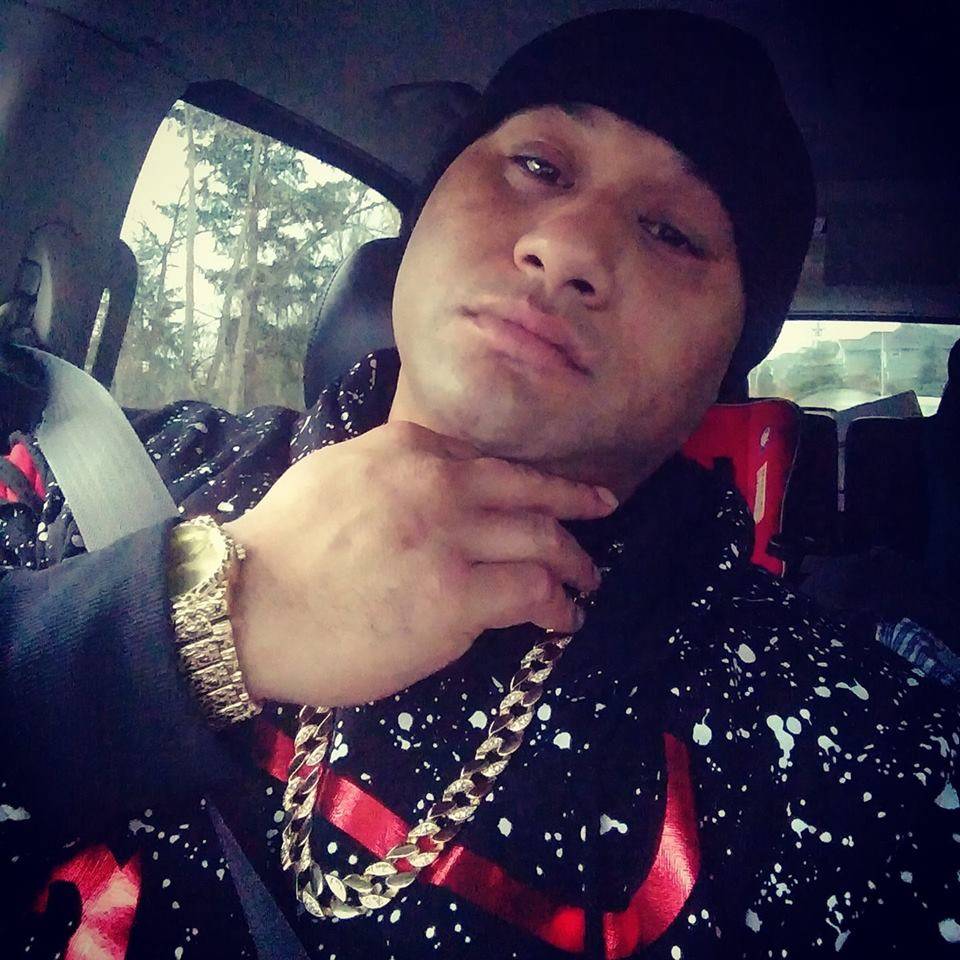Shortly after 5 p.m. on New Year’s Eve, Seattle Police Department (SPD) officers stopped 36-year-old Iosia Faletogo in Licton Springs’ Z Food Mart parking lot. An SPD post published on Jan. 3 stated that Faletogo had made an improper lane change; moreover, the license plate on the car he was driving indicated that its registered owner had a suspended license. The routine traffic stop then escalated into a frenetic chase when Faletogo ran from the car only to be followed by six officers down Aurora Avenue and North 96th Street before he was tackled to the ground less than half a mile later, revealed by a mashup of police bodycam and dashboard videos that were uploaded to YouTube.
“You’re going to get shot!” cops can be heard screaming during the chase and physical struggle, followed by a glimpse of Faletogo’s gun on the ground beside him while several cops hovered over him. Another officer shouted “He’s reaching,” to which Faletogo said in a muffled voice, “I’m not reaching.” A moment later, a gunshot rings out as SPD officer Jared Keller shoots Faletogo in the head, his body dropping limply to the ground.
The SPD post revealed that Faletogo was carrying $1,160 in cash and a vial with pills labeled as oxycodone but that were in fact fentanyl and the generic form of Tylenol. Faletogo also possessed a stolen handgun.
The fatal shooting came as a shock not only to Faletogo’s family, but to the tight-knit local Samoan community which Faletogo’s aunt Tiare Chanel said has been deeply affected by his death. “The shooting has brought a very dark cloud in my family,” said Chanel, a Tacoma resident. “It has impacted our community a lot … We feel that we’re just going to be part of the count of people of color that’s been conflicted with these issues.”
Chanel noted that she’s talked to mothers of Samoan origin in the area who now fear for their children’s safety, especially the kids who might appear physically large for their age. “A lot of the parents are worried about … their kids being home and them coming across police officers,” Chanel said. “How can we trust the system?” Chanel added that she believes so many officers were chasing her nephew because they were intimidated by his large stature at 6 feet 5 inches tall and 300 pounds.
Now Samoan parents are having conversations similar to those black families have had with their children for decades about protecting themselves when they encounter police, said Samoan community organizer Joseph Seia. (He is also a new commissioner on Seattle’s Community Police Commission, although Seia did not speak on behalf of the commission for this story.) “There is this very dominant narrative … there’s always size attached to it.” He referenced a history of deaths of Samoan men whom law enforcement or the media had described as “very large.”
Traditional mourning was also complicated by the manner in which Faletogo was killed, Seia said, noting that the head is “the closest thing to God” in Samoan cultural values. “Shooting somebody’s head is really declaring war against that family, it’s saying that they are not human, that they are trash, that they are animals. Culturally, it was a very harmful place for the family to see the wounds,” Seia said. The community also had to step up by donating money to the family so that the funeral home could complete the additional task of preparing Faletogo’s wounded head for the full viewing of his body, Seia added.
Locating resources and support to process their loss has also been difficult for those who knew Faletogo, given the small size of the local Samoan community. According to 2010 U.S. Census Data, Samoans compose 0.2 percent of the state’s population, with 13,110 residents. After the fatal shooting, Chanel and Seia realized there was a dearth of organizations to support and represent local Samoans during times of crisis.
Faletogo’s death hit close to home for many Pacific Islanders, particularly Seia, who had attended Seattle Public Schools with him. “It was really hard for us to organize as a community to come and mourn and support the family because there’s not a Pacific Islander social-service agency,” Seia said. After Faletogo’s death, community leaders hosted makeshift meetings in churches without the help of a strong alliance. In response, a few community leaders have begun brainstorming a people’s alliance in which local Samoans can convene to access mental-health or legal services following tragedies.
Although the potential organization is still in its nascent stages, Chanel noted that a cultural home would help increase the visibility of the Samoan community in the area. Such a nonprofit could also help counteract the negative stereotypes about Pacific Islanders that Chanel said she heard promulgated by the media following her nephew’s death. “He was always a warm nephew, and on the day that they laid him to rest, we saw thousands of people who were affected by this,” Chanel said. “It shows that the negativity didn’t really have an impact on him because he was all positive. He loved his community and family.”
MHellmann@seattleweekly.com
Talk to us
Please share your story tips by emailing editor@kentreporter.com.
To share your opinion for publication, submit a letter through our website https://www.kentreporter.com/submit-letter/. Include your name, address and daytime phone number. (We’ll only publish your name and hometown.) Please keep letters to 300 words or less.

